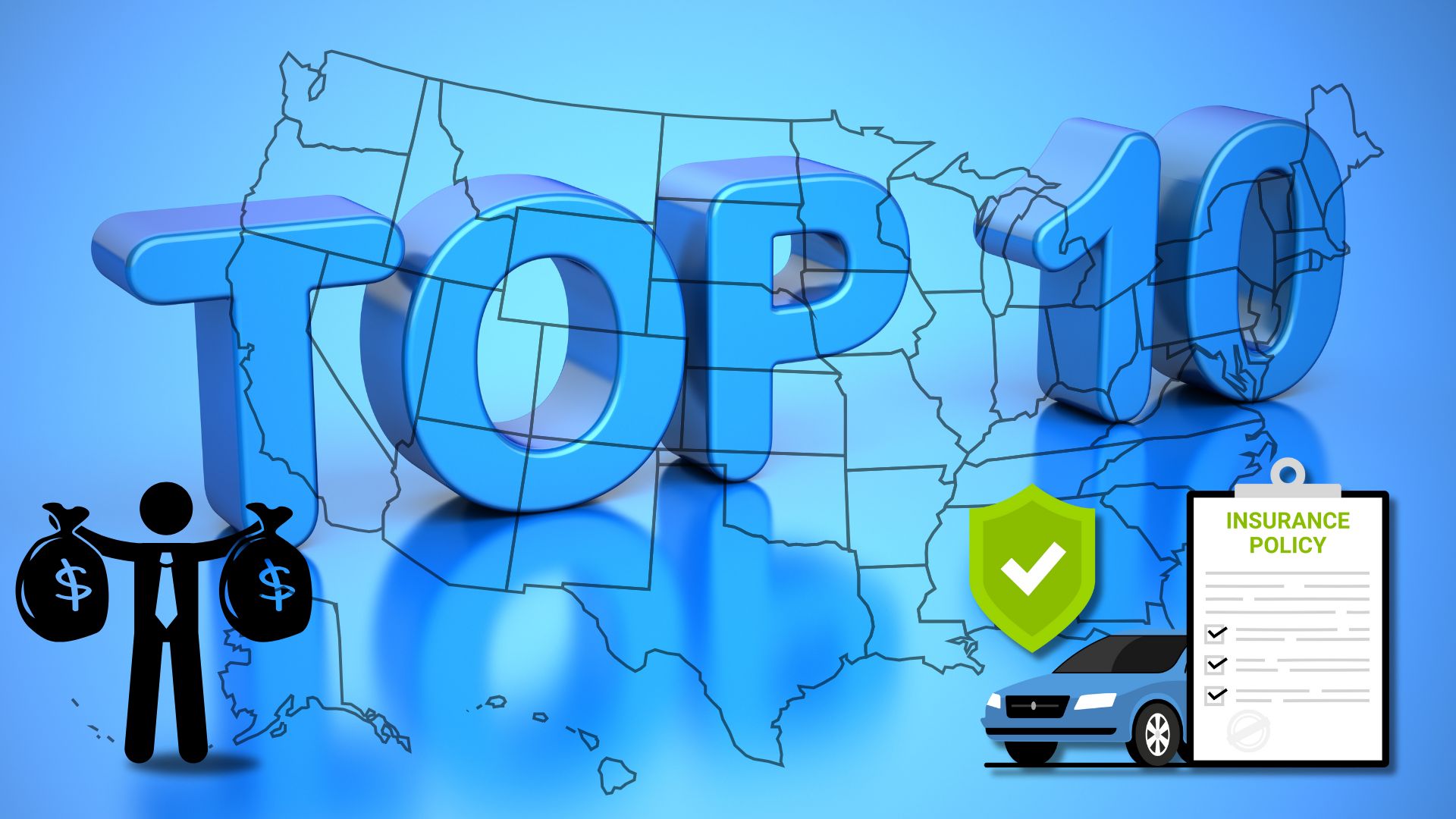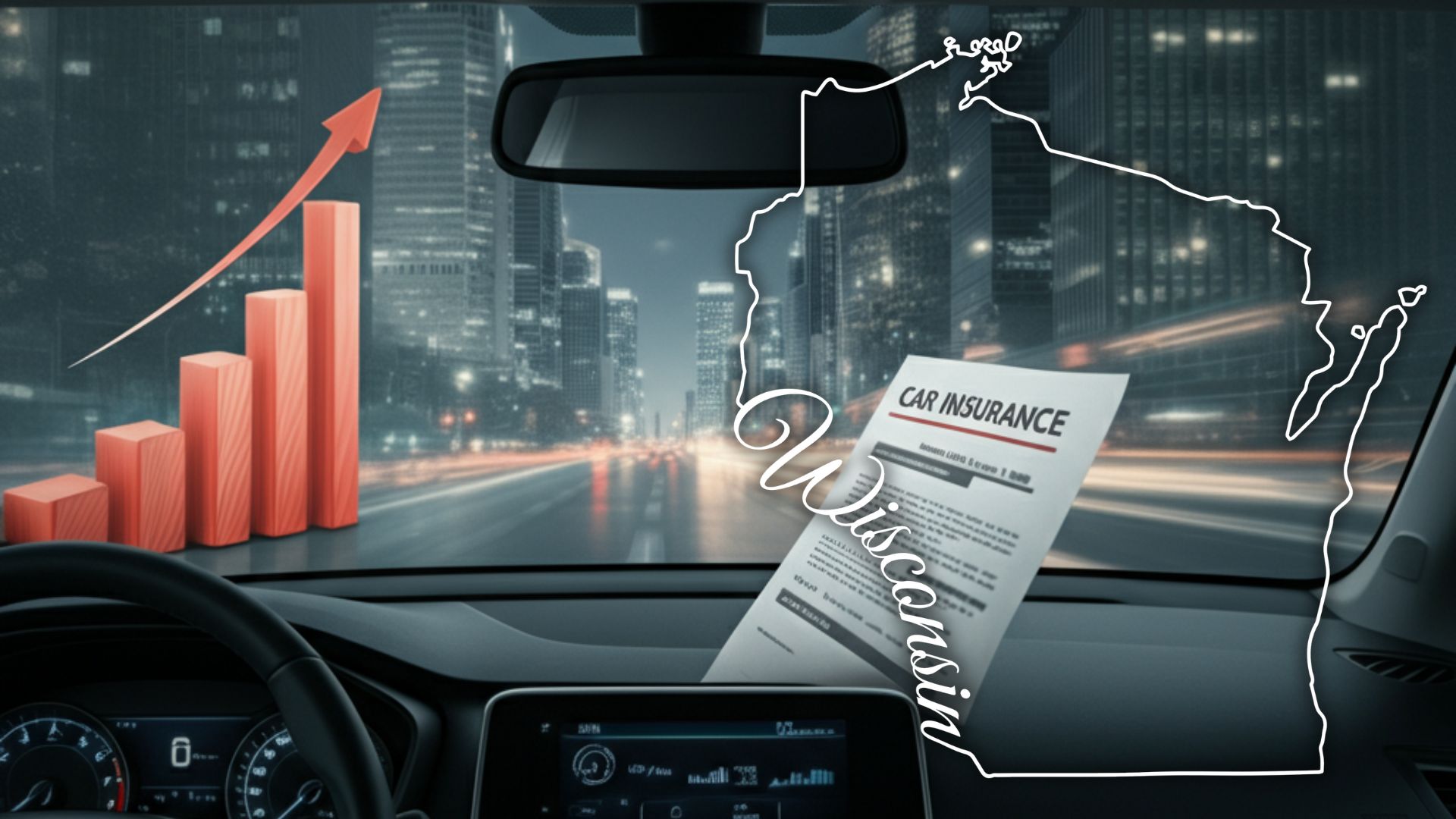Car insurance rates are climbing steadily across the United States, with most policyholders seeing their premiums rise again in 2025. While this trend isn’t new—rates have been increasing since 2022—Wisconsin drivers may find some relief compared to the rest of the nation. A recent study by insurance platform Insurify predicts that Wisconsin’s rate hike will be significantly smaller than most states, offering residents a bit of a silver lining amidst this nationwide trend.
Wisconsin Car Insurance Rates vs. the National Average
According to Insurify’s projections, the average annual cost of full-coverage car insurance in Wisconsin will edge up to $1,730 in 2025, a slight 3% increase from 2024’s $1,681. While price jumps are unwelcome news for many drivers, this is a sharp contrast to the 22% spike Wisconsin experienced between 2023 and 2024. Even better, when compared to the national average of $2,435 for 2025, Wisconsin’s rates remain substantially lower by over $700.
For Wisconsin drivers, that’s a reason to be cautiously optimistic. The state ranks among the 12 cheapest places in the country for auto insurance, a stark contrast to more expensive regions like Maryland, where annual premiums soar above $4,000. Why is Wisconsin doing comparatively well? A mix of factors, including lower population density and fewer incidents of extreme weather, may be helping keep costs in check.
What’s Behind the Nationwide Surge in Insurance Premiums?
Insurance premiums across the country have surged nearly 35% since 2022, according to Insurify, leaving many people wondering, “Why are rates climbing so fast?”
One major factor is the rising cost of vehicle repairs. Modern vehicles—especially electric cars and those loaded with high-tech safety features—are more expensive to fix after accidents. While advanced systems like sensors and cameras enhance safety, they also drive up replacement costs. What once might have been a simple bumper repair can now cost thousands due to embedded technology.
Another reason is the increased frequency and severity of weather-related claims. Insurance companies are factoring in greater risks tied to climate change, including floods, wildfires, hurricanes, and even severe thunderstorms. These natural disasters impact vehicles and infrastructure, leading to widespread claims that insurers must account for in their pricing models.
Finally, inflation is playing a significant role. Labor and material costs tied to repairs have risen, and the ripple effect of higher costs across industries is inevitably hitting car insurance premiums.
Why Wisconsin’s Hike Is Smaller Compared to Other States
While car insurance costs are rising nearly everywhere, Wisconsin appears to be in a better position than most states. Part of this comes down to geography. With fewer extreme weather events compared to hurricane-prone states like Florida or wildfire-affected regions like California, insurance companies face fewer high-cost claims in Wisconsin. This helps stabilize rates.
Additionally, Wisconsin’s rural and suburban landscape plays a role. With lower traffic density, there’s less opportunity for accidents to occur compared to cities like Chicago or New York. This reduces the frequency of claims and, in turn, the pressure to hike rates.
Still, this doesn’t mean Wisconsin residents are entirely immune to rising costs. If inflation continues to increase the price of labor and materials or if regional weather patterns shift, future rate hikes could become more pronounced.
Top 10 Most Expensive States for Car Insurance
To put Wisconsin’s relatively low rates into perspective, here’s a quick look at the most expensive states for coverage. According to Insurify, these states are projected to lead the nation in car insurance costs for 2025:
- Maryland — $4,060
- New York — $3,804
- Washington, D.C. — $3,399
- South Carolina — $3,393
- Florida — $3,166
- Delaware — $3,078
- Nevada — $2,973
- Louisiana — $2,820
- (tie) Colorado — $2,815
- (tie) Georgia — $2,815
Wisconsin’s rates are well below these numbers, but national trends suggest that all drivers should keep an eye out for potential future increases.
What You Can Do to Manage Increasing Costs
Although car insurance rates are trending upward, there are proactive steps you can take to soften the financial blow. Start by reviewing your current policy to see if there are coverage areas where you can potentially save. For example, raising your deductible or bundling auto insurance with other policies (like home insurance) might offer discounts.
Another tip is to shop around and compare quotes from multiple providers. Insurance companies use different algorithms to calculate rates, so you might find a better deal simply by switching providers. Also, ask about discounts you may qualify for, such as those for safe driving, low mileage, or even being a member of certain organizations.
Finally, preventive measures, like installing anti-theft devices or parking in a garage, can also lower rates. While some factors remain out of your control—like inflation or weather risk—things like your driving record and choice of vehicle are well within your hands.
Looking Ahead
The reality of rising car insurance rates is something all drivers need to face, but the picture isn’t entirely bleak. Wisconsin’s relatively modest increases for 2025 highlight how local factors can ease nationwide trends. Staying informed and taking practical steps to manage your own costs can help you adapt to these changes.
While we all hope for financial relief in the future, the gradual shift toward electric vehicles and automation might be a silver lining on the horizon. These advancements aim to reduce accidents and streamline repair processes, which could, in turn, stabilize insurance premiums over time. For now, take control where you can and drive with confidence knowing you’re doing your part to minimize costs.


